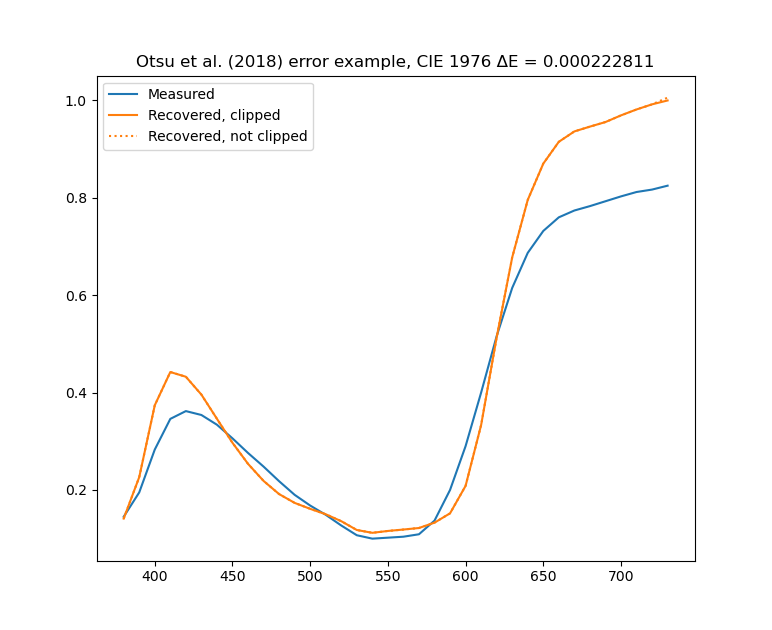Otsu et al. (2018), part 4
In the previous part I mentioned that reflectances reconstructed using this method can exceed the [0, 1] range and violate conservation of energy. Indeed, I could simply ask it for an imaginary color and get a weird, unphysical spectrum.
What's interesting is that this doesn't happen in practice, when upsampling real data. Out of almost 1300 reflectances I tested, I found only one bad reconstruction. Using the original clustering, the result for magenta from BabelColor Average colorchecker reflects 100,6% of light at 730 nm. Clipping this value to 100% creates a tiny color difference, orders of magnitude smaller than the just-noticeable difference.
Many methods have this property of being able to create perfect metamers, so looking at ΔE's isn't very interesting. In a future post I'll take a look at MSE (mean square error), which quantizes differences between spectra themselves, and compare a few methods.

